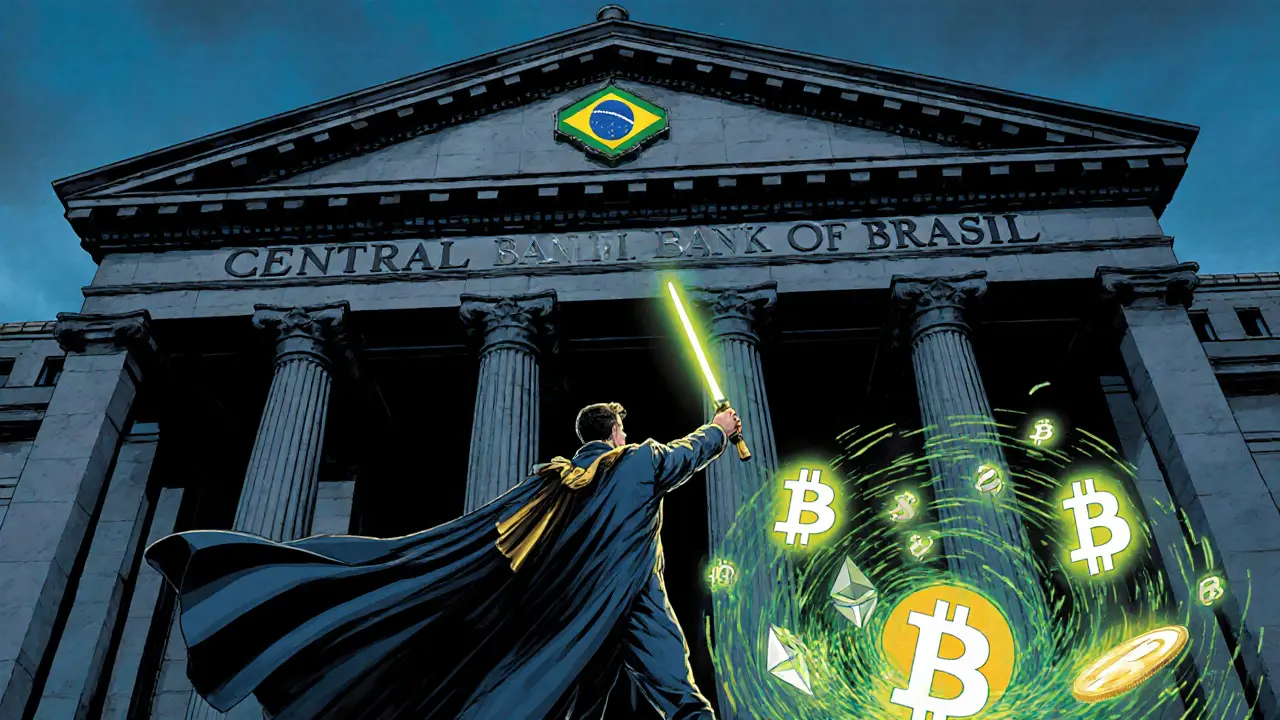How Brazil’s Central Bank Licenses Crypto Exchanges in 2025
A detailed guide on how Brazil's Central Bank licenses crypto exchanges, covering Law 14.478/2022, new forex rules, compliance steps, and practical impacts for businesses.
When working with Central Bank Brazil, the nation’s primary monetary authority that sets interest rates, manages inflation, and oversees the financial system, also known as Banco Central do Brasil, it influences everything from the Brazilian real to emerging digital finance. This institution sits at the heart of Brazil’s economy, shaping how money moves, how credit flows, and how new tech gets a seat at the table.
The bank’s Monetary Policy, a framework of rate adjustments, reserve requirements, and open‑market operations aims to keep inflation near its 3.75% target while supporting growth. By raising or lowering the Selic rate, the bank directly impacts loan costs, consumer spending, and foreign‑exchange pressure on the real. In practice, Central Bank Brazil balances price stability with the need for credit to flow to businesses and households.
One of the most talked‑about projects is the Digital Real, a central‑bank digital currency prototype designed to modernize payments and increase financial inclusion. The digital real would work alongside cash and electronic transfers, offering instant settlement and reduced transaction costs. Its development shows how the bank links traditional monetary tools with blockchain‑based innovation.
At the same time, the authority is building a regulatory sandbox for Cryptocurrency, digital assets that run on decentralized ledger technology. By crafting clear rules on licensing, AML/KYC, and consumer protection, the bank tries to foster innovation without opening the door to fraud. This sandbox approach illustrates the relationship: stronger crypto regulation influences market confidence, which in turn supports broader financial stability.
Speaking of stability, the bank’s mandate includes preserving Financial Stability, the resilience of banks, payment systems, and market infrastructure against shocks. It monitors systemic risk indicators, conducts stress tests, and coordinates with the Securities Commission (CVM) and the B3 exchange to ensure that a single failure won’t ripple through the economy. This oversight feeds back into monetary policy decisions, as risk‑adjusted rates help prevent overheating.
Open banking is another pillar. By mandating data sharing between banks and fintechs, the central bank expands competition and gives consumers more choice. The open‑banking framework relies on secure APIs, which dovetail with the digital real’s technical standards. In short, open banking enables new payment services that the digital real can eventually complement.
Internationally, the bank participates in forums like the BIS and the G20, sharing lessons on digital currency pilots and cross‑border payment corridors. These collaborations help Brazil align its policies with global best practices, especially around anti‑money‑laundering (AML) standards that affect crypto exchanges operating in the country.
All these pieces—monetary policy, digital real, crypto regulation, financial stability, and open banking—form an interconnected ecosystem. Understanding how they fit together gives you a clearer picture of where Brazil’s financial system is headed and how investors, startups, and everyday users can navigate the changes. Below you’ll find a curated set of articles that dive deeper into each of these topics, offering practical insights and up‑to‑date analysis.

A detailed guide on how Brazil's Central Bank licenses crypto exchanges, covering Law 14.478/2022, new forex rules, compliance steps, and practical impacts for businesses.